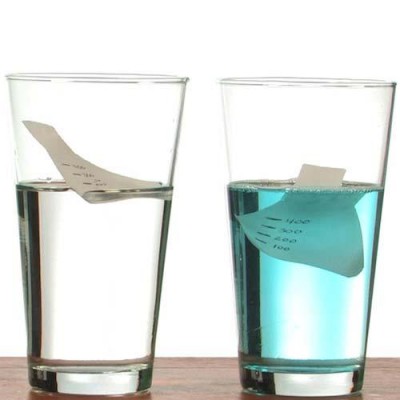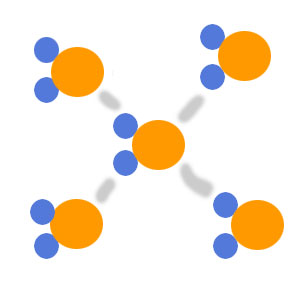Sink or Swim – What Happens When You Weaken the Hydrogen Bonds in Water?
Water is a miracle liquid. All living things need it to survive and it has some unique properties unto itself. Hydrogen bonds are responsible for the unusual characteristics of water. These strong intermolecular forces are formed between water molecules and are responsible for the high boiling point and wide range of temperatures in liquid water.
Water is known as the Mickey Mouse molecule because two hydrogen atoms bond with one oxygen atom to form a molecule – H2O. When the two hydrogens bond with the oxygen, the electrons are not shared equally. (Pull out that high school chemistry for this lesson.) Because of this, the oxygen has a partial negative charge, and the hydrogen has a partial positive charge.
The opposite charges attract each other like magnets and form a hydrogen bond.
Hydrogen bonds are not strong bonds, but they make the water molecules stick together. The bonds cause the water molecules to associate strongly with one another. But these bonds can be broken by simply adding another substance to the water.
What happens when you weaken or change the amount of surface tension of the water? Adding only one additional substance to water can greatly affect the hydrogen bonds, determining whether something floats or sinks.
Try this simple experiment to test the strength of hydrogen bonds in water –
Experiment
- Fill two glasses equally full with water.
- In one of the cups, add about 1 oz (30 mL) of dish soap and gently stir the solution.
- Create two identical balls of paper that can fit into your glasses of water.
- Gently drop one paper ball into the plain water and drop the other paper ball into the glass with the soapy water solution.
- You will quickly observe that the paper balls react differently to the two fluids. In fact, one paper ball begins to sink while the other sits atop the water!






i really wanna do this for a science experiment but im really not sure if itll work but i also wanna do the 12 ft mentos soda gyser. can you please help me out an dgive me advice please and thank you